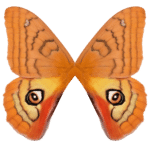ATLAS by Jen Lewin
24 Handcrafted & hand-painted etheral glowing moths
On view at Discovery Green’s Brown Promenade
Friday, Nov. 15 – Sunday, Feb. 16; 6 a.m. – 11 p.m.
ATLAS, by internationally recognized artist Jen Lewin, is an interactive public art installation featuring 24 handcrafted and hand-painted ethereal glowing moths on a monumental scale.
These majestic creatures will be suspended from the trees of the Brown Promenade, reacting to the movement of visitors. Each moth, meticulously crafted by hand, represents a unique endangered North American moth species.
The moths symbolize the vital role these creatures play in the natural lifecycle of plants and trees in the region.
EXPLORE: The 24 endangered moths that constitute ATLAS
(Photos by Nicki Evans)
Schedule
Join this dynamic group of supporters who champion the park’s arts and culture programming. PRISM members invest in the park and the Houston artists, musicians, and other professional creatives it presents.
You and a guest will enjoy great benefits, plus special invitations to:
- behind-the-scenes receptions
- private art collections
- artists’ studio tours
- backstage tours
- culinary experiences, and more




